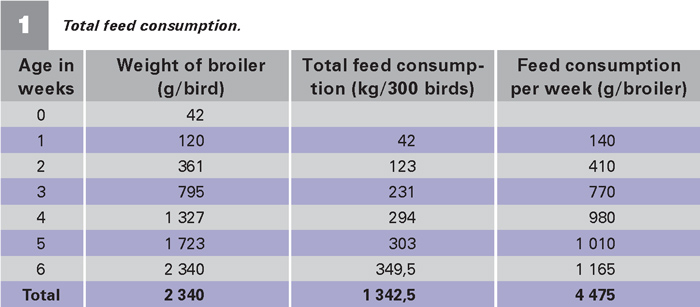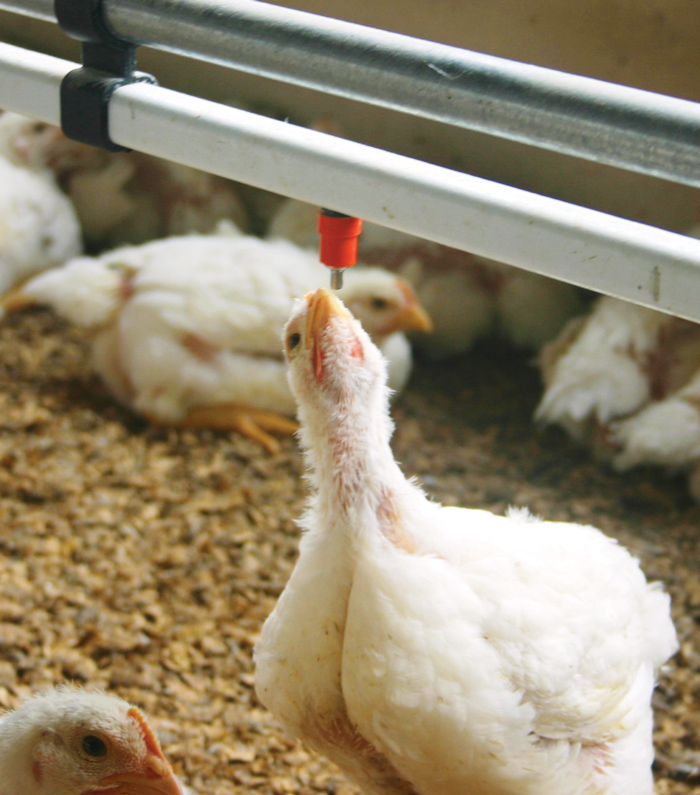June 2021
| RICHARD MCPHERSON, AGRIBUSINESS AND PROJECT MANAGEMENT CONSULTANT |
 |
The previous two articles covered general aspects of broiler production and some of the important management points for a good start after placement of day old chicks. This article takes a look at performance objectives and other parameters.
It is assumed that the initial phase of production and further growth after the starter rations, grower and finisher under your conditions has been followed and growth targets realised.
Starter feed will be given for one to ten or even 14 days. Grower rations from eleven to 25 days and finisher from 26 to 42 days. Some producers might also use an additional ration formulated for use after 42 days. This might be appropriate if a larger slaughter size is required or for a live market.
PERFORMANCE OBJECTIVES
Keep manual as well as digital records as the poultry industry is very well suited to keeping detailed daily production records.
Enough data must be kept so that any differences to the performance standards as provided by Ross, Cob or Arbor-Acres can be explained. Placements and batches will always differ in performance. Any mortalities above 5% should be fully explained as any more can have a great impact on profitability. It is possible with good management to keep mortalities below 3% and Culls between 1% and 2%.
Water usage and feed should be monitored and recorded daily to see if the birds are drinking enough for the feed consumed. Birds must be weighed weekly (at the minimum) by catching random samples to the scale at the end of each week.
The total feed used in a house will be divided by the numbers harvested (Table 1). These can then be compared to the performance standards of the specific breed used on your farm.

 The feed conversion ratio will then be 4 475 g divided by 2 340 g which is 1,91. This means that 1.91 kgs of feed produced 1 kg of live bird. It is an important benchmark to quickly see if the enterprise is economically viable. A ratio of 1,85 is very good.
The feed conversion ratio will then be 4 475 g divided by 2 340 g which is 1,91. This means that 1.91 kgs of feed produced 1 kg of live bird. It is an important benchmark to quickly see if the enterprise is economically viable. A ratio of 1,85 is very good.
Other factors to be recorded are age in days and weeks, mortality (deaths) and culls, total of deaths and culls to the standard mortality, weekly actual body mass to standard body mass and difference.
Be aware of the performance efficiency factor (PEF) which most flock managers use to assess the overall results from a batch or house. This is calculated using liveweights, liveability (% birds that have survived), age at depletion in days or harvesting and the feed conversion ratio. Work this out after understanding the formula used. Compare your number to rate the overall performance to other producers.
CONCLUSION
Use the data recorded and results achieved as well as the accurate record of costs to work out the margin over direct costs. This must be positive. Your fixed costs to run the operation can then be subtracted to show you the net profit generated.
Publication: June 2021
Section: Pula/Imvula